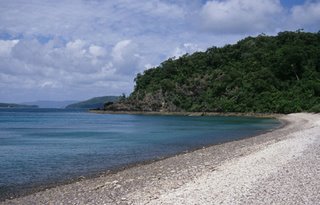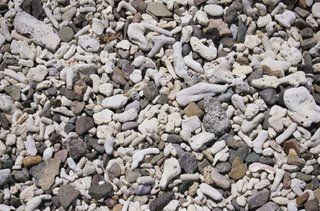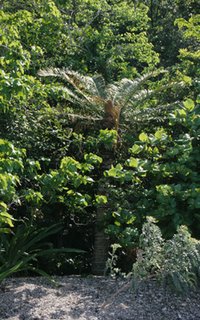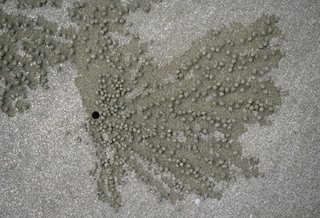 This is a beach near Bowen, North Queensland. The town isn't particularly exciting. (Sorry, Bowenites, but you know it's true.) Yet unassuming Bowen has some interesting beaches.
This is a beach near Bowen, North Queensland. The town isn't particularly exciting. (Sorry, Bowenites, but you know it's true.) Yet unassuming Bowen has some interesting beaches.That's not sand in the foreground—it's coral rubble. Pieces of coral (mostly the staghorns, Acropora, which fragment easily) are rolled around and smoothed by the waves, then cast up on the beach. Excellent for beachcombing. Dreadful for barefooted ambling.
 Not many animals live among the coral pieces. If you search through them, you'll find a few ants and small crustaceans. The beach here is too unstable to allow burrowing, so there are no permanent inhabitants.
Not many animals live among the coral pieces. If you search through them, you'll find a few ants and small crustaceans. The beach here is too unstable to allow burrowing, so there are no permanent inhabitants.
It's a different story higher up, where strandline plants stabilise the deposits. Goat's foot convolvulus (Ipomoea pes-caprae) is widespread in the tropical Indo-Pacific. The cycad behind is not so common.
 That's just a baby cycad, by the way. There are much bigger individuals at the edge of the forest. (If you know the species of cycad, please post a comment.)
That's just a baby cycad, by the way. There are much bigger individuals at the edge of the forest. (If you know the species of cycad, please post a comment.)Not all of this beach is shifting coral rubble. Much of it is an expanse of even-grained sand, perfect for aimless morning moseying. And the crabs love it too.

